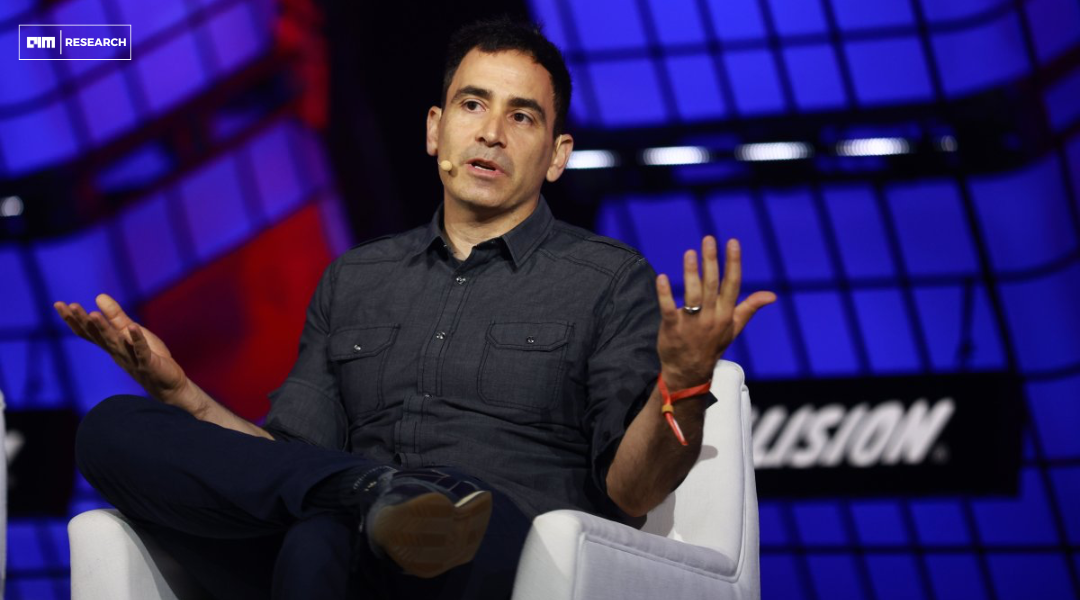AI Rollups Could Eat the World
- By Mukundan Sivaraj
- Published on
VCs like Elad Gil think AI Rollups are the next obvious investment choice.


“It just seems so obvious,” said Elad Gil, the early AI investor now turning his attention to acquiring traditional services businesses and scaling them with artificial intelligence. “You can transform it much more rapidly than if you’re just selling software as a vendor,” he told TechCrunch.
Therein lies the thesis behind AI rollups, a hybrid model that combines private equity-like consolidation with the margin-expanding potential of AI.
In 2011, VC Marc Andreessen famously wrote that “software is eating the world.” He wasn’t wrong. Software companies built platforms and tools that firms eventually adopted, many times reluctantly, but almost always inevitably. Now a new generation of investors is betting that AI rollups might finish the job, by owning the enterprises outright.
Andreessen’s prediction rested on software seeping into legacy sectors. Software companies didn’t need to own a bank to disrupt it, they just needed a platform. Retail, media, and finance were all reshaped by companies that built technology and distributed it at scale.
But this approach hasn’t worked everywhere. Many industries (accounting, staffing, HVAC, legal services) remained stubbornly analog. These are the kinds of sectors, says investor Vinay Iyengar, where “adoption of software, let alone advanced AI, lags significantly.” Yet they make up a huge portion of the economy, employing about half of the American workforce and contributing roughly 44% of GDP.
Instead of selling to these businesses, AI rollups acquire them. Then they rebuild their operations with intelligent automation. Iyengar describes the strategy as buying up small, fragmented companies and using AI to “substantially automate human knowledge work.” The goal isn’t just to cut costs, it’s to create full-stack, AI-powered service firms with margins that resemble software companies.
Staffing, for example, is a $200 billion market with over 23,000 agencies. It’s labor-intensive and operationally inefficient, making it a prime target for transformation. An AI-native staffing firm can conduct interviews around the clock, in any language, with no human bias or scheduling delays. “It’s like lighting up a call center with an unlimited supply of objective, multilingual agents,” says Iyengar.
Where traditional software scaled horizontally (building once and selling many times) AI rollups scale vertically. They buy a company, inject AI into its workflow, and use the resulting cash flow to acquire and transform the next. It’s a more hands-on model, and it has powerful advantages: full data access, control over operations, proprietary workflows, and rapid feedback loops for fine-tuning models.
Boosting gross margins from 10% to 40% can change everything. “That’s a huge lift,” Gil says. “Suddenly you can buy other companies at a higher price than anyone else because you have that increased cash flow per business.”
This kind of margin expansion can put AI rollups in a different class from software vendors selling to reluctant industries. It’s not about convincing buyers to adopt change, it’s about owning the business and making the change yourself.
Still, for all the enthusiasm, the model introduces complications, particularly around capital structure. Unlike pure software companies, AI rollups need both equity and debt. The former fuels technology development, the latter funds acquisitions. These financing strategies pull in opposite directions. That means these businesses likely won’t be valued like SaaS companies, with their software being used internally rather than sold widely.
There’s also a logistical layer to consider. Rollups are already operationally complex. Layering AI into the mix raises the execution bar. Gil has met more than twenty teams pursuing the strategy, but most, he says, “still need to sort some things out.” The challenge is a mix of technical and cultural. Many of the industries targeted for AI transformation have deep-rooted habits, legacy workflows, and organizational inertia.
In Andreessen’s 2011, software disrupted industries through product. AI rollups aim to do it through ownership. That distinction changes things. Rather than sell software to thousands of enterprises, AI rollup firms rewire the machine from within.
This approach is already attracting heavyweight backers. Thrive Capital, Khosla Ventures, and General Catalyst have each placed early bets on rollup-driven platforms. Thrive, for example, has raised $1 billion for a permanent capital vehicle dedicated to acquiring and transforming legacy businesses with AI at the core.
But for all the potential, scale won’t come from viral distribution or network effects. AI rollups won’t eat the world in the same way software did. Provided they remain funded, they’ll digest it more slowly: business by business, workflow by workflow.
